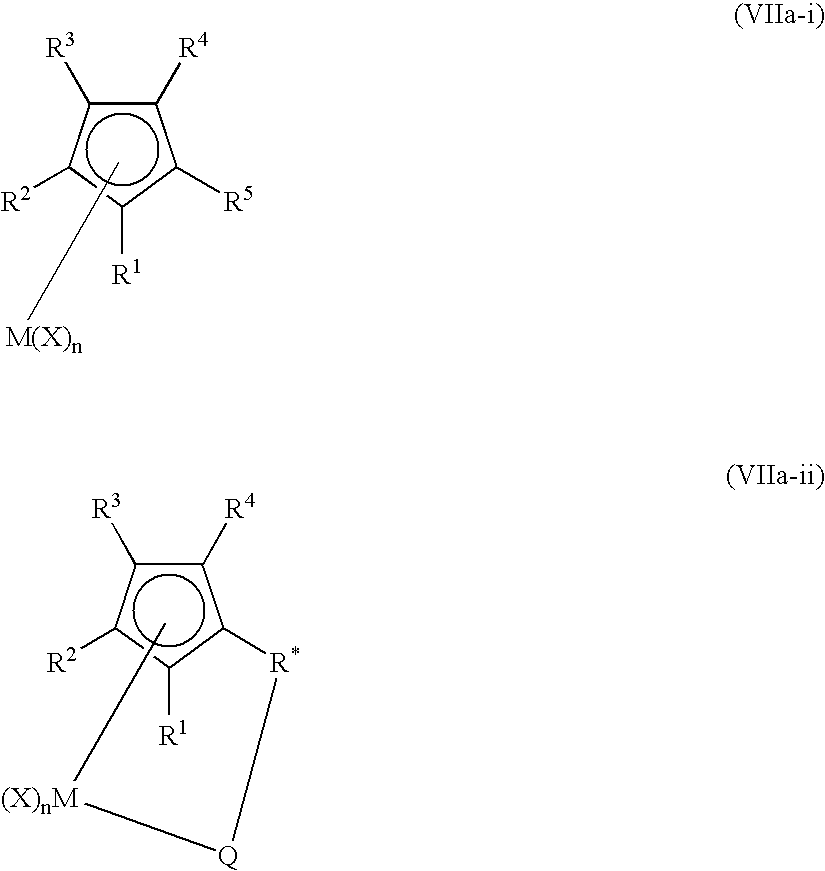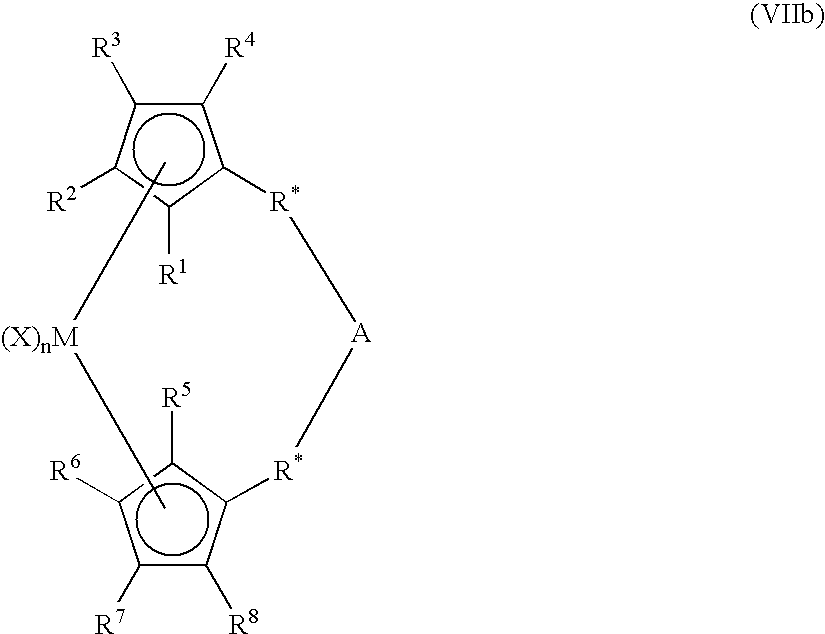Activated catalyst systems from substituted dialuminoxane complexes
a technology of activated catalyst and dialuminoxane, which is applied in the direction of catalyst activation/preparation, physical/chemical process catalysts, chemical/physical processes, etc., can solve the problems of high cost of starting material tma, complex process for synthesis of mao, and use of mao as activator
- Summary
- Abstract
- Description
- Claims
- Application Information
AI Technical Summary
Benefits of technology
Problems solved by technology
Method used
Image
Examples
example 1
[0309]0.860 grams of tetraethyldialuminoxane was combined with 1.0 grams of silica (Davison 948 calcined at 600° C.) in a 100 mL flask. The resulting slurry was allowed to sit overnight. The resulting silica was filtered, and rinsed with several 10 mL portions of toluene. 0.05 grams of trisperfluorophenylborane was added to the dialuminoxane treated silica, slurried in toluene and heated to 100° C. for three hours. The silica was then filtered, rinsed with several 10 mL portions of toluene, and subsequently combined with 0.025 grams of (—(CH2)4—Si(CpMe4)(Ind)ZrMe2. The supported catalyst was allowed to sit at room temperature for 1 hr. The catalyst was filtered, rinsed with several 10 mL portions of toluene, and dried under a vacuum.
example 2
[0310]0.645 grams of tetraethyldialuminoxane was combined with 1.0 grams of silica (Davison 948 calcined at 600° C.) in a 100 mL flask. The resulting slurry was allowed to sit overnight. The resulting silica was filtered, and rinsed with several 10 mL portions of toluene. 0.05 grams of trisperfluorophenylborane was added to the dialuminoxane treated silica, slurried in toluene and heated to 100° C. for three hours. The silica was then filtered, rinsed with several 10 mL portions of toluene, and subsequently combined with 0.025 grams of (—(CH2)4—Si(CpMe4)(Ind)ZrMe2. The supported catalyst was allowed to sit at room temperature for 1 hr. The catalyst was filtered, rinsed with several 10 mL portions of toluene, and dried under a vacuum.
example 3
[0311]0.430 grams of tetraethyldialuminoxane was combined with 1.0 grams of silica (Davison 948 calcined at 600° C.) in a 100 mL flask. The resulting slurry was allowed to sit overnight. The resulting silica was filtered, and rinsed with several 10 mL portions of toluene. 0.05 grams of trisperfluorophenylborane was added to the dialuminoxane treated silica, slurried in toluene and heated to 100° C. for three hours. The silica was then filtered, rinsed with several 10 mL portions of toluene, and subsequently combined with 0.025 grams of (—(CH2)4—Si(CpMe4)(Ind)ZrMe2. The supported catalyst was allowed to sit at room temperature for 1 hr. The catalyst was filtered, rinsed with several 10 mL portions of toluene, and dried under a vacuum.
PUM
 Login to View More
Login to View More Abstract
Description
Claims
Application Information
 Login to View More
Login to View More - R&D
- Intellectual Property
- Life Sciences
- Materials
- Tech Scout
- Unparalleled Data Quality
- Higher Quality Content
- 60% Fewer Hallucinations
Browse by: Latest US Patents, China's latest patents, Technical Efficacy Thesaurus, Application Domain, Technology Topic, Popular Technical Reports.
© 2025 PatSnap. All rights reserved.Legal|Privacy policy|Modern Slavery Act Transparency Statement|Sitemap|About US| Contact US: help@patsnap.com



